M.V. Clark's Blog, page 8
December 1, 2017
Hell House LLC
Never mind how Hell House LLC compares with other found footage films. It's a nearly perfect horror movie, period.

It's about a haunted house attraction put on in an abandoned hotel to cash in on Halloween. As the staff prepares the hotel, things take a sinister turn.
The film is essentially one long fairground ride. Characters are lightly drawn and the story is archetypal. But imagine a ghost train that actually wears down your suspension of disbelief until you feel uncomfortably frightened.
The structure of the fictional attraction - you queue, you enter, you get gradually more unnerved - mimics the structure of the plot. It's a stripped down version of the plot of any horror movie, arguably. But this is no Pirates of the Caribbean and that's down to the direction. No jump scares, just a visual conversation between death as fun and death as stalker, with the stalker gradually winning.
Despite its flaws, Hell House is not just another found footage film. It actually gets depth from an unexpected source - its festive, fairground ride structure. It reminds us that life is all one big party on the Titanic. I think we horror fans appreciate that message when it's as well-delivered as it is here.
November 23, 2017
A Cure for Wellness
A Cure for Wellness is self-indulgent, far too long and wildly overblown, but I still liked it a great deal.
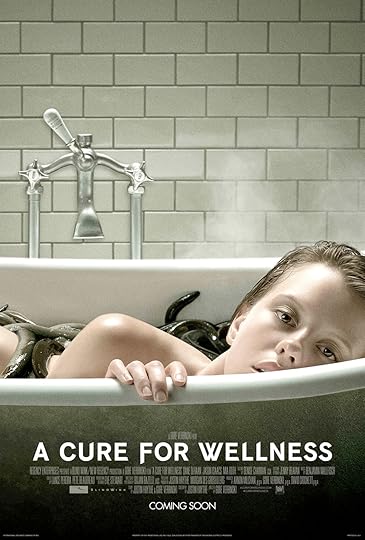
It's about Lockhart, a young executive at a financial services company. He's sent to retrieve Pembroke, an errant board member currently having a nervous breakdown in a sanatorium in the Swiss Alps.
When Lockhart arrives at the hospital he finds it unnerving and dreamlike, with Pembroke nowhere to be seen. After he breaks his leg the charismatic head doctor, Volmer, presses treatment on him. He eventually finds Pembroke but leaving the sanatorium is harder than it looks.
At least two sections should have ended up on the cutting room floor - one where Lockhart receives treatment in a tank which is infested by eels, the other where there's a montage of two characters descending into water. The eely tank has a digressive quality and adds nothing to the narrative. The montage is badly edited and melodramatic.
The climax was inflated to the point you worried it might burst all over you - effective in a way I suppose.
But there's still a lot to admire and enjoy. Dane DeHaan is brilliant as Lockhart. Mia Goth, who plays a frail young woman floating around the hospital, is exceptional. The dynamic between these two characters, and in particular their adventure in the village beyond the sanatorium walls, had me totally convinced.
The location - an abandoned hospital once used by senior Nazis - is spectacular. It was restored for the film and, I imagine, spruced up with CGI. The visual poetry of its swirling staircases, endless corridors and shining tiles is a great cinematic experience.
I loved the contrast between the US and Europe, too. The beginning of the film situates us in the merciless world of capitalism. Both we and Lockhart know this world well - nothing matters but money and the next deal. But when Lockhart gets to the Swiss Alps he's suddenly plunged into history and it feels deliciously odd after the first portion. Never mind that Volmer simultaneously channels psychoanalysis and Nazism (the former was actually chased out of Europe by the latter). Volmer's a composite of everything people think is weird about Europe and I enjoyed the extravagance of that.
There's a remarkable film inside A Cure for Wellness. What we've been given is long and slow and less remarkable. But it's still well worth watching.
November 21, 2017
Why is Stranger Things so good?
I mean, just why? We’ve seen all the elements before – it’s saturated with cultural references – and there’s a lot of other good stuff out there. Why has it taken Breaking Bad’s crown as king of our small screens?
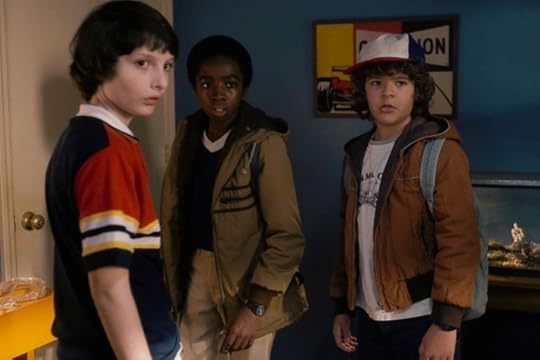
I started off by asking google and found two direct answers. This, from the UK’s esteemed Radio Times, doesn’t tell us much and contains a huge spoiler for anyone who’s not yet seen series one.
This article by Erik Kain for Forbes contains no spoilers and is much more on point. Kain says Stranger Things is so good because it's short, with an addictive yet satisfying mystery, and great acting.
I agree about the brevity. A lot of series are full of padding. Whole scenes come across as a copy of another show you saw before. At worst, you feel the show is copying itself, rehashing scenes from earlier episodes. Stranger Things never does this.
I agree about the mystery – it’s gripping but not maddening. Questions are already being answered by episode five of series one, whilst leaving plenty open. It’s like a cultural pendulum is swinging back after the torment of Lost.
I would, however, add something else – attention to detail.
Every scene contains some subtle but rich observation that get you in the gut. When Mike (Finn Wolfhard) is called upstairs by his impatient mum he doesn’t just reply ‘coming!’ in a loud voice. That’s what would happen in a show that’s copying other shows. He screeches “COMING!” like a banshee. That’s clearly based on real observation (possibly of my very own house on a school morning).
Nancy's love interest, Steve (Joe Keery), isn't merely shallow. His shallowness is finely observed. You get the feeling his character arc is going to be defined by this in a really interesting way (NB I'm only on episode five - maybe he has some kind of epiphany in the next episode).
When Will’s mum (Winona Ryder) gets a new phone to replace the one that was torched by a weird electrical surge, she doesn’t just plug it in and sigh. That’s what she would do in a show that’s copying other shows. In this show, she sits down in an armchair with the phone on her lap. And you know she’s going to sit there for hours. It’s what I would do if it was my son.
This is, I think, why Stranger Things is so good. Great performances, beautiful camera-work and luxuriant period detail are all part of it as well. But I think it's the fullness of the storytelling and the complexity of the characters that lifts it above the herd.
For now, that’s my tuppence-worth. But as I say I’m only on episode five, series one. I’m sure I’ll have more to say.
November 19, 2017
I went to see Stewart Lee last night.
Last night I went to see Stewart Lee's latest show, Content Provider. Lee is a controversial UK stand-up, very left-wing with a cantankerous on-stage persona.

He didn’t mention zombies once, which was disappointing as it makes this blog post really difficult to justify. But he did employ plenty of extreme metaphors (his grandparents' BDSM sex life, for example) and he threatened the audience with a mic stand in quite a scary way.
A running theme through the show was the echo chambers we all live in, which have been reinforced by the digital age. Lee jars the audience into realising this applies as much to us – the infamous liberal metropolitan elite - as to Brexit and Trump voters.
I was reminded about the process that I am experiencing now as I emerge, mid-life, with a new identity as an indie horror author.
One of Lee's best gags for me was about how his family still don't believe he's a successful stand-up comedian. That was a real takeaway for me - even if I sell books my family's current disbelief at what I'm doing will never dissipate either.
And there's nobody around me who loves horror. Friends and family who read The Splits have, therefore, had a jarring experience. Some are shocked that I can dream up such stuff. It’s just extreme metaphors, I say, but this doesn’t seem to reassure them.
Am I asking horror fans to move out of their echo chambers? The Splits does, after all, encompass other genres – political satire, science fiction, meditation on motherhood, and psychological thriller. I don’t think so, because horror fans are so up for being jarred to begin with.
Other than that there’s no purpose to this blog post, except to say Stewart Lee is completely brilliant. I know it’s de rigeur to say he looked fat and depressed and fat, and indeed he did. But he’s also one of those great philosopher-comedians, like Louis CK used to be. How else are we going to stop and think about what is a good life in this mad digital age?
Stew talks zombies
November 17, 2017
Am I really going to do this?

I’m about to film a vlog. I’m not going to tell you what it’s about, but I’m psyched!
Script – check!
Red lipstick – check!
Attitude – check!
Maniacal self-belief…. So so…
Something interesting to say?…. Unfortunately I cannot decree this unilaterally - I need to let the viewers decide.
Anxiety that I may live to regret this?.... Check!
November 16, 2017
Alien vs Predator
WARNING: SPOILERS
No, not Alien vs Predator.
Alien...
....versus
....Predator!
Fighting it out for supremacy in the league of best horror films. Clash of the frightens!
Now I’m not so idiotic to think I have anything original to say about either of these amazing, much-discussed films.
The idea actually comes from my husband. He was quite disgusted by my Deadgirl v The Corpse of Anna Fritz blog, and asked why I didn’t do Alien versus Predator like ‘a normal woman’. He loves his idea and won’t shut up until I’ve done it.
[image error]
"More normal." Alien...

....versus Predator.
So for all the people out there who hate the idea of necrophilia but love the idea of fighting a hostile, overwhelmingly superior extra-terrestrial, here you go.
WHAT BINDS THESE FILMS…The characters
Both Alien and Predator feature a tight-knit team poisoned by one member who puts orders above human life – Ash in the former, Dillon in the latter.
The mission
Both teams have a mission which they resent – checking out signs of intelligent life in Alien, and rescuing hostages in Predator. In both cases the mission is not what it seems – it’s a set-up.
The monster
Need I?
The environment
Both the spaceship and the jungle are toweringly claustrophobic. Both have terrifying, unknowable depths. Both are essentially characters in their own right.
The denouement
The monster fights one-on-one with the alpha character and loses – to Ripley (Sigourney Weaver) in Alien, to Dutch (Arnie) in Predator.
… AND WHAT DIVIDES THEMThe characters
Amongst Predator’s mercenaries we have a bespectacled geek, a womanising hick, a super-tough black dude, and a Native American tracking expert. Different yes, but all rough diamonds - admirable people, excellent at what they do.
Nostromo’s crew are genuinely mixed - some are venal and uninspiring, some are creepy and obsessive, some are conflicted, some are hard to read. After coming out of stasis they have breakfast and squabble like a family. And it doesn’t stop with character – the relationships between them are set out with astonishing clarity.
The leader
Throughout Predator, Dutch remains front and centre as the alpha human. Whereas Ripley slithers out of the background gradually and reluctantly. Seeing her develop into the alpha is like watching another painful birth.

Can't miss him.

Where did she come from?
The tone
Predator is an action-horror, of course. But even so there’s something surprisingly jaunty about it. Its soundtrack is reminiscent of ET or Indiana Jones. The dialogue is stacked with one-liners, reminding us that this is entertainment. Dutch’s one liners in particular (“Stick around” etc) are really quite silly. The colours are bright, the girl is beautiful. Dutch treats the girl with old-fashioned chivalry and there’s a hint of a fairytale ending – the kind that produces cute babies - when we see her smile at his safe return.
Alien is much less reassuring. There’s a fairytale moment at the beginning when the crew awakes from stasis – everything sparkles, Kane lifts his hand balletically, and the soundtrack is pure Christmas magic. But from then it’s dark, dreary, and fingernails-on-chalkboard tense. The dialogue is documentary-realistic, there are no signals that what you’re seeing isn’t real. Ripley ends up with her cat, mother to nobody.
Inside and outside
The predator invades the men in strange ways before it kills them. It sees inside their bodies with thermal imaging. It steals their voices, mimicking Mac, for example, to trick Dillon. This is powerful stuff.
However, Alien takes it further.
There’s the obvious fact that the alien grows inside Kane. But consider this – it is allowed on board because of company orders. There’s actually “a survivor, unclouded by conscience, remorse, or delusions of morality” present right from the start of the film – the company.
Company orders are carried out by members of the crew – Dallas and Ash. In that sense the alien is on board from the beginning. It’s part of the crew already. It’s inside the crew before they ever answer that distress call.
WHICH FILM IS BETTER?They’re both wonderful, but Predator feels a little less radical. Alien, on the other hand, unravels everything. So it’s Alien all the way for me.
But I’d still love to hear other people’s thoughts. If Chris Stuckman thinks Predator is better so must lots of people. I'm curious - why?
Comments are open below.
November 15, 2017
Deadgirl vs The Corpse of Anna Fritz - the verdict
I asked which one is better. Well to be accurate I stalked people on twitter who had mentioned both films in a single tweet and begged them for their opinion. It's Deadgirl by a country mile.
"Not even a question for me. Deadgirl was a surprise, more depth than you'd expect. Anna Fritz is total by the numbers garbage."@DRainford said:
"COAF was on a visual level a more competent film, there was decent cinematography matched with an interesting visual style. DeadGirl was more intense in terms of what took place within the universe. COAF was very tame, at least to me."@CouchZombie said:
"DeadGirl is equal parts unique and outrageous. Challenges both the intellectual and visceral side of the Horror brain. I loved it."So we have a winner. Anna Fritz does chime with the zeitgeist, in my opinion. But Deadgirl goes off into this crazy subterranean dreamworld where everything is upside down. It's much more unexpected and original. It's for all times, not just right now.
November 14, 2017
Digital edition of original 1990s Splits leaflet
A higher quality version from a friend's digital archive. A big improvement on the one I found down the back of the couch and scanned in. Please share.
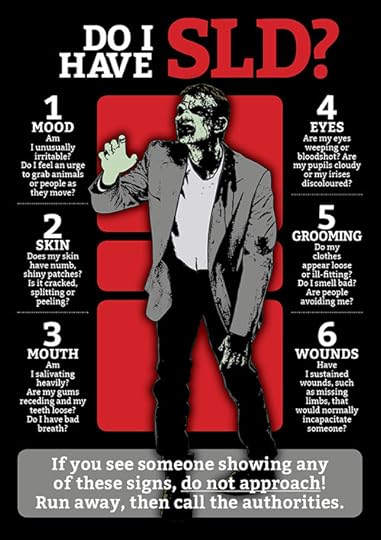

November 13, 2017
Deadgirl vs The Corpse of Anna Fritz!
WARNING: SPOILERS
Why pit Deadgirl (2008) against The Corpse of Anna Fritz (2015)?
Well, they are both about young men who have sex with dead women – a zombie in the former, an expired film star in the latter.
This is not usually my thing, but in the era of #metoo, extreme metaphors for sex crimes feel useful rather than gratuitous.
I made the connection about a week ago when I saw the following tweet:
CORPSE OF ANNA FRITZ - Three horndogs get a scary surprise when they decide to have sex with an actress’s corpse. https://t.co/jPPzNGlody pic.twitter.com/zPhKWbPnHl
— Shudder (@shudder) November 4, 2017
I was instantly reminded of Deadgirl, even though it’s almost ten years older.
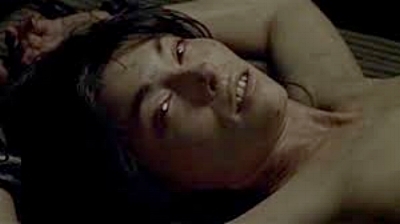
I think this is my favourite shot of deadgirl's face. Look at her bright, flickery, uncomprehending eyes and her hungry mouth. She's part zombie, part pornstar, part baby rooting for milk. Just horrible!
Some people see the films as too similar.
Spoiler alert: The Corpse of Anna Fritz is a Spanish remake of DeadGirl.
— Dylan Rainford. (@DRainford) November 12, 2017
And they are similar. But they are also quite different. The really interesting question is, which one is better? Let’s take a look.
WHAT BINDS THESE FILMS...Beginning
Both Deadgirl and The Corpse of Anna Fritz (DG and COAF from hereon) start with young men letting off steam at a hospital.
In DG, Rickie and JT run down the corridors of an abandoned mental asylum breaking windows and throwing trolleys at walls. In COAF Ivan, Javi and Pau drink spirits and snort coke behind the hospital dumpsters.
Group dynamics
In both films there’s a conversation between the boys where moral norms are broken down – you can’t just go straight into having sex with a dead/undead girl after all.
In both there’s one boy (JT, Ivan) who is already morally detached and leads the charge towards transgression. There are tensions between this character and another (Rickie, Javi) who is horrified by the idea.
Fear of discovery
In both DG and COAF, the boys are terrified of the outside world knowing what they have done. Maternal figures invoke the greatest fear – JT’s last words are “don’t tell my grandma”, while Pau’s dread of his mother finding out makes him commit murder.
The girl
In both, there’s a sense that girls’ minds are difficult, and finding one without a mind is a solution.
In both, the actor playing the girl does most of her acting with her eyes, and this is extraordinarily powerful.
In both, the girl gets her revenge.
…AND WHAT DIVIDES THEMTo decide which film is better, let’s take a look at the differences.
Characters
In DG the boys enlist your sympathy. They’re outsiders - from a lowly social class with families that are messed up or non-existent. JT’s grotesque attachment to the dead girl gives us a window into his loneliness. Rickie is a vulnerable and trying to do the right thing. When I first saw the film 10 years ago I probably fancied him (NB he doesn't have sex with the girl!). Now that I'm married with two kids I want to give him a hug and tell him he's doing just fine.
Whereas COAF is a nightmarish morality tale with limited characterisation. We never learn anything about the three ‘horndogs’ past. We only get to know them in the context of the morgue. What we discover is deeply unpleasant.
The girl
In DG the dead girl is a zombie. She survives bullets, strangulation, beatings and a broken neck. She has no reaction to being raped but if you get too close she takes a bite.
Whereas in COAF Anna is actually alive. She’s a real person. She’s not a supernatural conceit or a thought experiment.
Moral payoff
DG’s director calls the film a coming of age story. When Rickie realises the dead girl is the best he can expect, he enters into a sad sort of manhood. The dead girl is a catalyst for his - very crooked – development. As such the film isn’t about her, it’s about him. Sex with a woman who cannot consent is a metaphor for the male characters’ stunted lives. The film does condemn this way of relating to women, but only indirectly.
COAF on the other hand whacks you over the head with its message – having sex with a corpse is bad and wrong. The ending – which I won’t give away – suggests the film is really about Anna, not the boys who rape her. It suggests she’s been through something much worse than what happens in the morgue. Essentially that being raped by men who think you’re dead is not that different from the casting couch, and what you’re really seeing is Anna’s previous life.
WHICH FILM IS BETTER?To sum up, DG is a film for the age of Donald Trump and Brexit, when you choose something you really shouldn’t. It’s a sympathetic portrait of people who are genuinely suffering and make disastrous choices.
COAF is a film for the post-Harvey Weinstein, post-Jimmy Saville age, when it becomes clear a lot of powerful men don’t think women are actually human.
In other words, they’re both equally relevant! HELP! HELP ME DECIDE! This isn’t a gimmick. Ask anyone who knows me, I’m a legendary fence sitter.
Which do you think should win? Deadgirl or The Corpse of Anna Fritz?
November 12, 2017
Original 1990s Splits leaflet
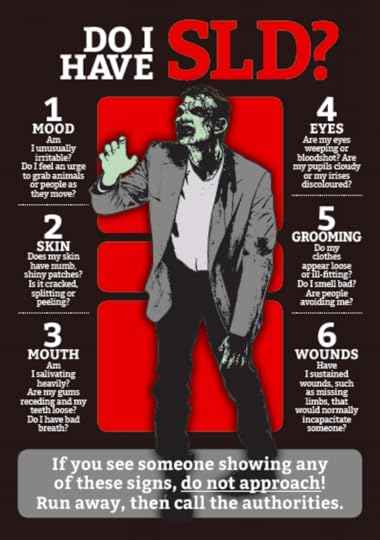
Front of leaflet
In the 1990s there was a major public health campaign about Scott-Lapidot Disease - AKA 'the Splits' - which aimed to clear up a number of persistent myths about the illness. I found an original leaflet from that campaign tucked down the back of my aunt's sofa. I've scanned it so I can post it up for anyone who's interested. Well worth a look, I think. It's pretty accurate about the symptoms even if it's got the root causes of Scott-Lapidot Disease (SLD) totally wrong.

Back of leaflet



